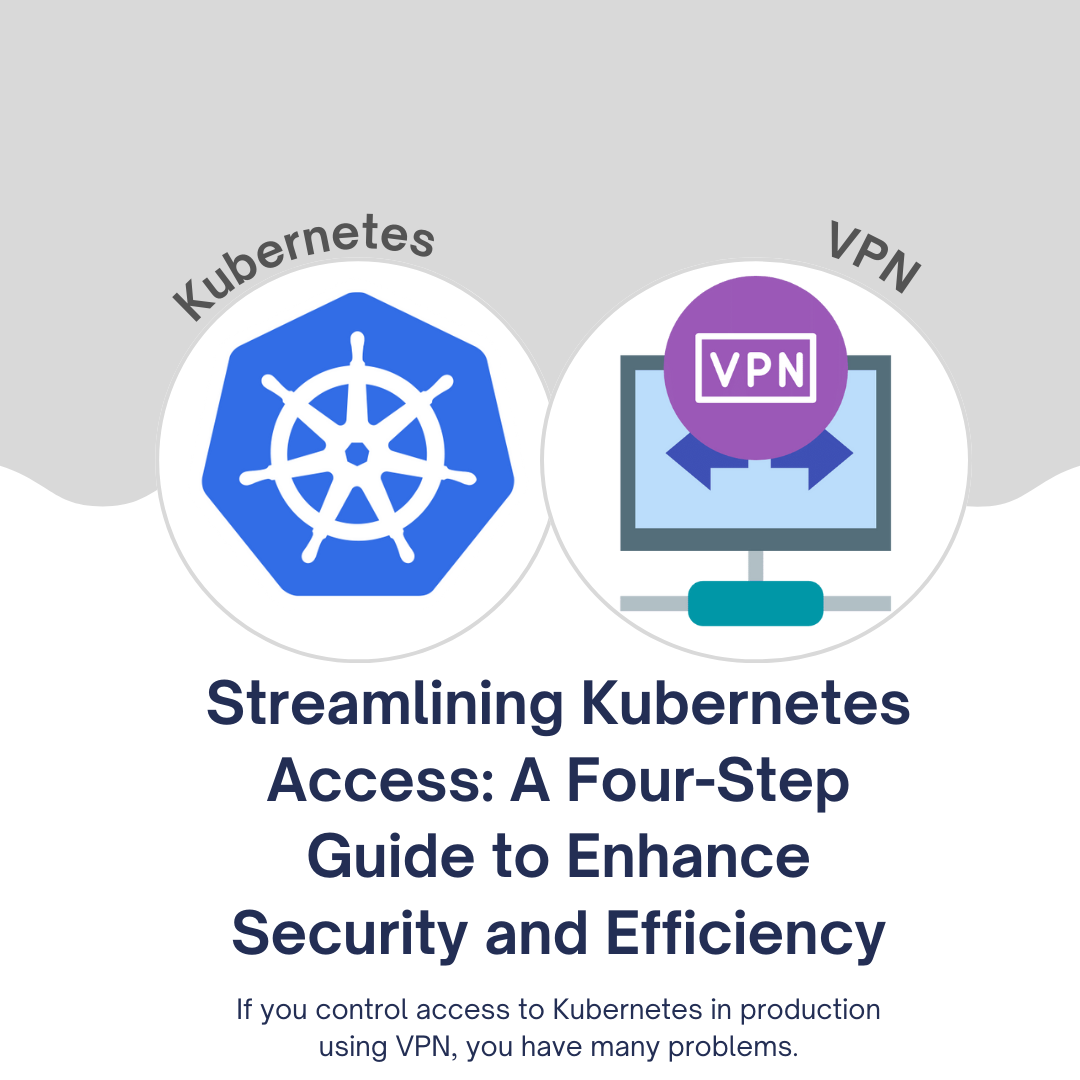Streamlining Kubernetes Access: A Four-Step Guide to Enhance Security and Efficiency

Kubernetes has revolutionized container orchestration, enabling the deployment and management of containerized applications at scale. However, like any powerful tool, it comes with its own set of challenges, especially when it comes to granting secure access to your Kubernetes clusters. Many organizations turn to VPN (Virtual Private Network) solutions to manage access, but this approach can introduce vulnerabilities and inefficiencies if not properly implemented. In this article, we will explore four essential steps to address the hidden vulnerabilities of Kubernetes VPN access and enhance security and efficiency in your Kubernetes infrastructure.
The Five Biggest Problems
Before diving into the solutions, let's first understand the five major issues associated with Kubernetes VPN access:
1. Slow Access to Engineers in Production
Fast access to the right engineers in a production environment is crucial for maintaining product speed and addressing issues promptly. Delays in data access can hamper troubleshooting, bug fixes, and incident resolutions.
2. Security Risks
Many teams employ suboptimal solutions for granting access to Kubernetes, leading to significant security risks. These vulnerabilities can jeopardize the business's security or result in inefficient workflows.
3. Building Painful Infrastructure
Setting up infrastructure for Kubernetes access through a VPN can be a cumbersome process, often causing frustration and operational challenges.
4. Hidden Vulnerabilities
The missing components in Kubernetes access management are often overlooked but present substantial attack vectors, including:
- Single Sign-on (SSO) & Multi-Factor Authentication (MFA)
- Audit Trails and Personally Identifiable Information (PII) Protection
- Compliance with regulations such as GDPR, PCI, SOC2, and HIPAA
- Developer Experience
Gradual Improvement Using the 80/20 Rule
Now that we've identified the problems, let's explore a step-by-step approach to fix these hidden vulnerabilities:
1. Add Kubernetes to Systems You Already Manage
Start by integrating Kubernetes with existing systems. For instance, if your organization already uses Google Workspaces, you can leverage it for identity management without the need for a separate LDAP directory. Consider the following:
- Implement SSO for SSH access.
- Explore tools like Cloud Shell solutions from AWS or Google Cloud.
- Consider using tools like Runops to simplify the integration.
- Avoid creating a complex environment with multiple new tools; instead, focus on integrating with existing solutions like Google OAuth.
2. Prioritize Relevant Kubernetes Access Features
Different industries have varying needs for Kubernetes access. Tailor your approach to your specific requirements:
- If your priority is developer experience and fast access, focus on streamlining the process to reduce the number of steps needed for access.
- If your organization deals with sensitive data and compliance is critical, prioritize implementing audit features and compliance measures.
- Always aim to simplify the access process and reduce unnecessary steps.
3. Leverage Comprehensive Access Solutions
Simplify your infrastructure by consolidating access management for various services:
- Consider using a single tool that can manage access not only to Kubernetes but also to AWS, GCP, databases, servers, and other resources.
- While specialized tools may excel in certain areas, managing multiple tools introduces complexity. Opt for a slightly less user-friendly experience that covers all your access needs with a single tool.
4. Add Friction to Unwanted Access Methods
To steer users towards secure access methods, consider introducing controlled friction to less secure alternatives:
- If engineers are accessing Kubernetes through insecure methods, add a form submission process to discourage this approach.
- Gradually improve the preferred access method to be more convenient and efficient, ultimately making it the easiest choice.
In conclusion, securing Kubernetes VPN access is a critical aspect of maintaining the integrity of your containerized infrastructure. By following these four steps and addressing the hidden vulnerabilities, you can enhance security, streamline workflows, and ensure a smoother Kubernetes access experience for your organization. Remember, a thoughtful approach and gradual implementation can make a significant difference in achieving your goals.
